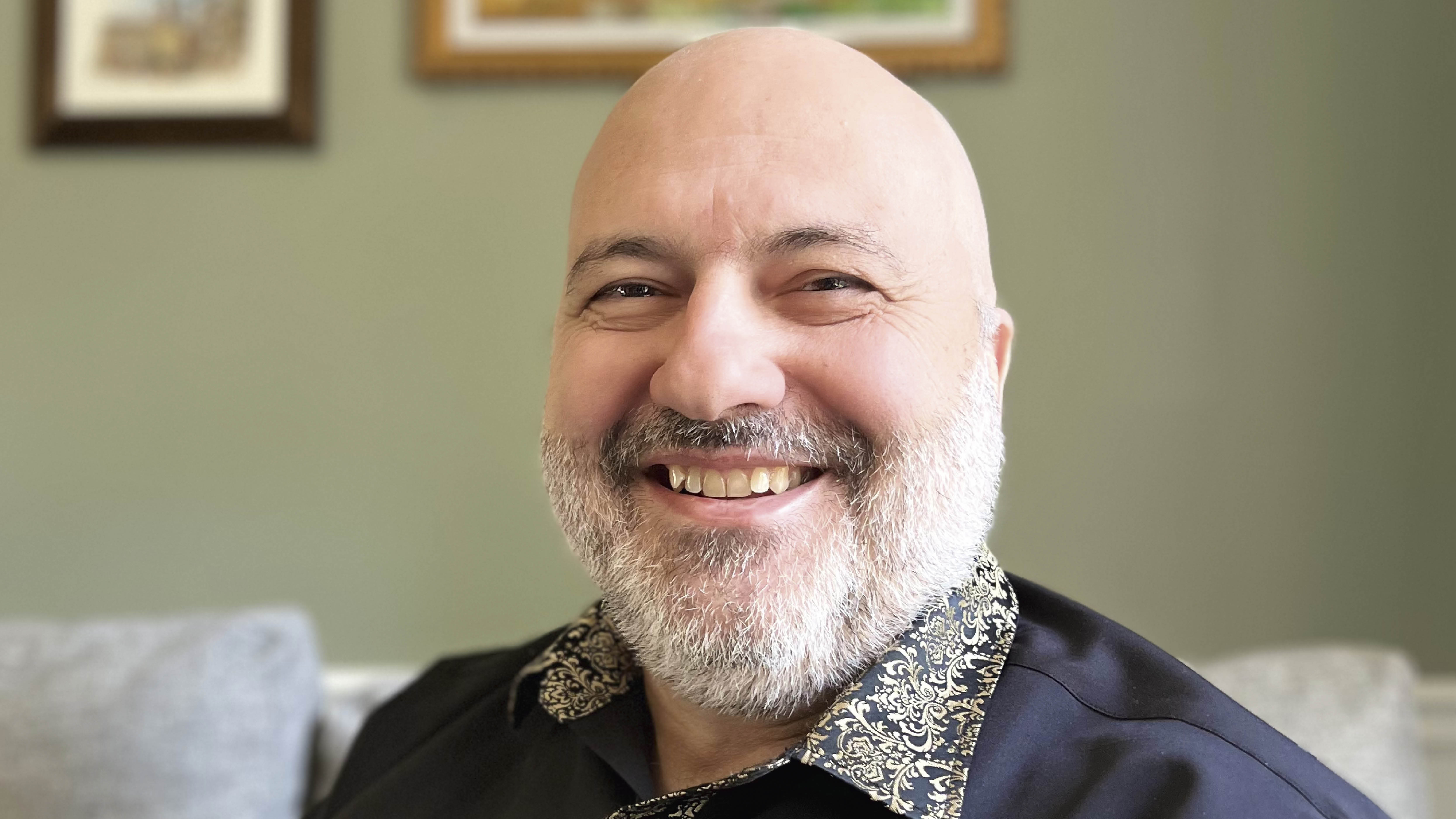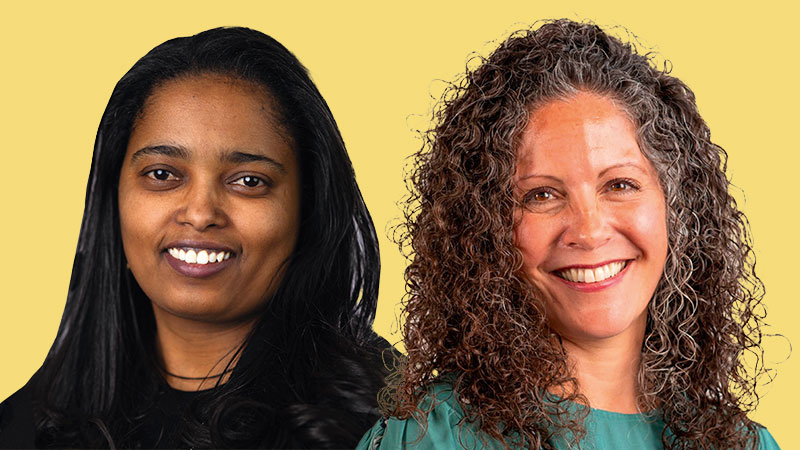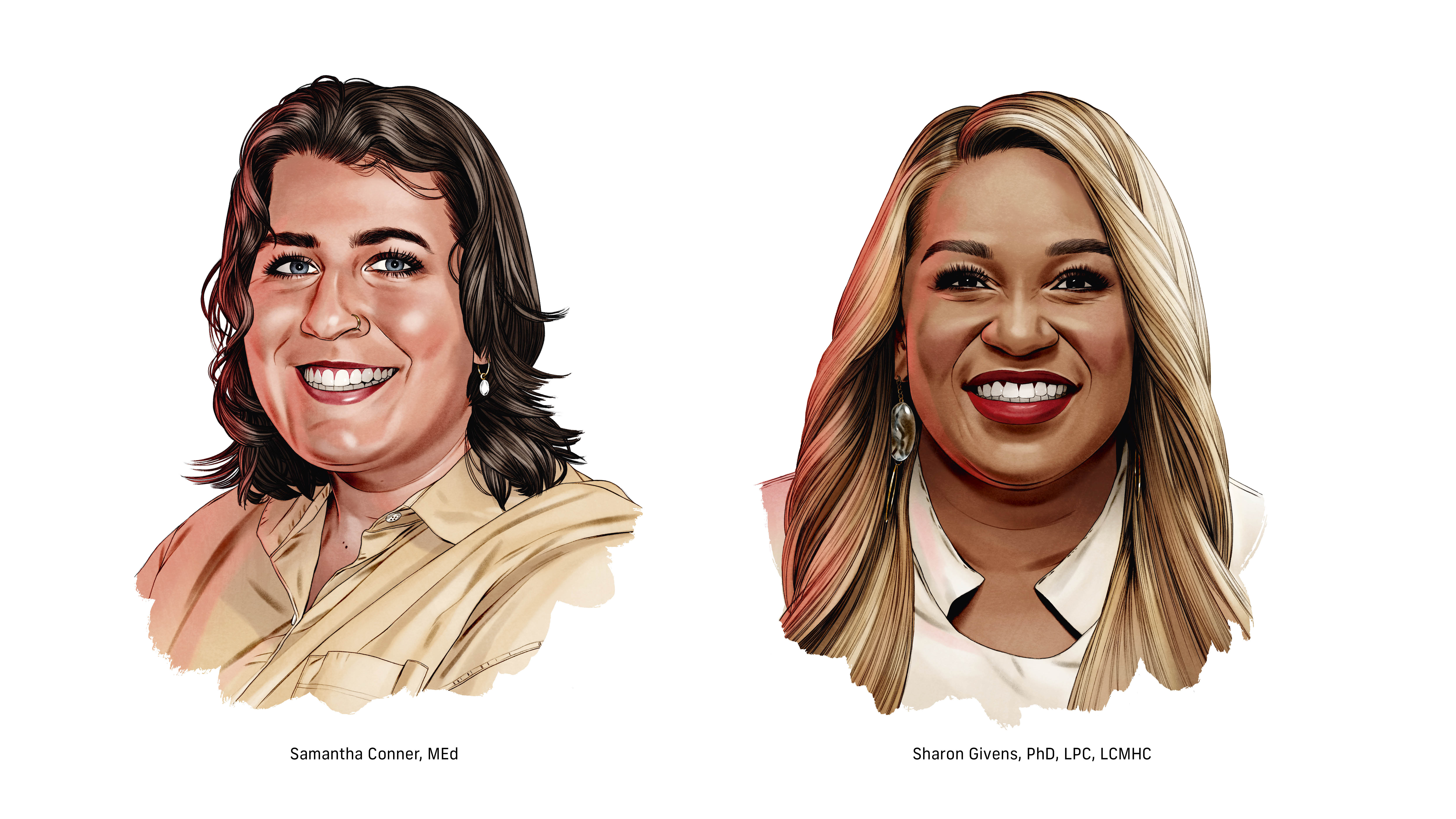
Counseling Among Friends
When friendships crack, some people seek support through friendship counseling, an emerging practice area.
Online Exclusives
-
 General Session Recap: Dr. Tommie Mabry on Childhood TraumaMarch 2025 |By Caren Clark
General Session Recap: Dr. Tommie Mabry on Childhood TraumaMarch 2025 |By Caren ClarkTommie Mabry, PhD, discusses the power of intervention as a protective factor for youth with adverse childhood experiences.
-
-and-jeanette-betancourt-(right).png?sfvrsn=ffae5bd0_2) General Session Recap: Nourishing Young Children’s Well-BeingMarch 2025 |By Caren Clark
General Session Recap: Nourishing Young Children’s Well-BeingMarch 2025 |By Caren ClarkDay two of the 2025 ACA Conference & Expo featured a discussion of strategies and resources to promote the mental health of children and youth.
-
 Brandon Wolf Delivers Powerful Opening Keynote at ACA Conference & ExpoMarch 2025 |By Caren Clark
Brandon Wolf Delivers Powerful Opening Keynote at ACA Conference & ExpoMarch 2025 |By Caren ClarkAs harmful rhetoric and policies fuel a growing mental health crisis, professional counselors can be vital advocates for LGBTQ+ youth.
Explore More Online Exclusives
Counseling Today Member Blog
By Ted Chapin, PhD, LCP, LMFT
In 2014, Lori Russell-Chapin, PhD, coined the term “neurocounseling” in Counseling Today. Since then, the term has taken on a much wider and significant role in the counseling profession. Today it’s known as neuroscience-informed counseling and includes work in neurocounseling and neurofeedback. This article presents nine future trends in neurocounseling, neurofeedback and neuroscience-informed counseling.
1. Focus on Underlying Neurophysiological Dysregulation
Continuing work in neurocounseling will focus on addressing clients with complicated, chronic and complex problems that don’t respond well to traditional counseling and medication or “treatment as usual.” These clients report repeated sessions of counseling and failed responses to medication. They have multiple symptoms and express frustration, exhaustion and discouragement. These clients are at risk of suicidal ideation that may require hospitalization or residential treatment. Their brainwave electrical activity and physiological functions such as heart rate, breathing, muscle tension and hormone regulation are severely imbalanced or dysregulated. To benefit from counseling, their healthy brainwave activity and body regulation must first be improved. This can be done through neurocounseling, which may include lifestyle changes in diet, sleep and exercise; reduced screen time; the use of brain-based supplements such as omega-3, D3 or melatonin; biofeedback to improve breathing, muscle tension or blood flow; and neurofeedback to restore the brain’s healthy neurological activity.
2. Move from a Normative to an Ipsative Conceptualization of Mental Health
Neurocounseling is moving away from a “normative” view of mental health that assesses symptoms and evaluates progress compared to a mathematical or theoretical norm. Instead, it takes an “ipsative” or client-centered, individual view. This approach considers where the client begins and ends following treatment, rather than if they fall within or outside a normative range. This individualized approach is consistent with the core values of the counseling profession.
3. Use of Biomarkers and Biosensors to Assess and Monitor Change
A fascinating trend in neurocounseling is the use of biomarkers and biosensors, such as blood tests, measures of inflammatory factors, metabolic studies and variations in the epidermal ridges or outer skin of fingers and palms. Professional counselors increasingly use these across many diagnoses: depression, anxiety, stress-related conditions, schizophrenia, psychosis, bipolar disorder, autism spectrum, anorexia-nervosa and borderline personality disorder. Some of the latest sensors detect cortisol, dopamine, serotonin and oxytocin.
4. Major Theoretical Shift in Understanding How Change Occurs in Neurofeedback
Original research in neurofeedback suggested simple principles of reinforcement changed complicated brainwave behavior. Researchers thought that presenting clients with an audio/visual stimulus, paired with a target brainwave, over many sessions, would change their brainwave and the symptoms associated with it. Recently, leaders in the field have indicated change in neurofeedback involves “endogenous neuromodulation.” In other words, neurofeedback allows the brain to “witness” its own activity and change itself. This remarkable explanation of neuroplasticity can change a client’s brainwaves in a single session.
5. Use of QEEG as a Transdiagnostic Biomarker of Health or Sickness Behavior
In neurofeedback, the primary tool for assessing brainwave electrical activity is the 19-channel quantitative electroencephalogram (QEEG). This expensive and time-consuming tool, which requires specialized knowledge and training, is interpreted through a normative database. Instead, a simple, one-channel measure of the brain’s electrical activity may be used as a “transdiagnostic biomarker” of “sickness or healthy behavior.” A healthy QEEG trace line or graphic representation appears random and complex without any visible patterns or redundancy. This variability reflects the brain’s ability to select the “right brainwave, for the right task, at the right time” and not “get stuck” in an unhealthy redundant brainwave pattern. “Healthy and sickness behavior” tends to cluster around the alpha (calm focus) brainwave. For example, higher alpha waves (10–12 hz) are associated with obsessive-compulsive disorder and post-traumatic stress disorder, and lower alpha waves (8–10 hz) are associated with depression and inattention. This readily visible and simple “transdiagnostic biomarker” makes assessment of brainwave dysregulation more convenient and less expensive for repeated, pre- and post- treatment measures of change.
6. Rise in Affordable Home Neurofeedback Training Systems
Use of affordable, home-based neurofeedback training systems is increasing. These systems range in cost from a few hundred to a couple thousand dollars. Some operate as a stand-alone unit. Others require coordination with a professional neurofeedback coach or a membership to access a full range of capabilities. None provide the same individualized clinical neurofeedback services clients would expect from a board-certified neurofeedback practitioner. Most are typically not FDA-approved medical-grade devices. They do use neurofeedback technology and claim to help with non-clinical problems like cognitive functioning, flexibility, efficiency, sleep, calmness and meditation.
7. Continued Integration of Neuroscience in Counselor Education
Neuroscience research is increasingly being incorporated into counselor education. CACREP-approved graduate programs around the country are continuing to integrate neuroscience, neurofeedback and neurocounseling into their curriculums. Some already offer neurofeedback certification training. Others provide online brain-based training in neurocounseling. Still others have integrated the steadily increasing literature in neuroscience-informed counseling into existing graduate courses.
8. Establishment of Counselor Competencies
Professional journals such as the Association for Counselor Education and Supervision’s Counselor Education and Supervision and the American Mental Health Counseling Association’s Journal of Mental Health Counseling have published research toward the development of counselor competencies in both neuroscience-informed counseling and neurofeedback. Such research led to a proposed three-step training model in which counselors get foundational knowledge in neuroanatomy and physiology, learn neuroscience application to clinical presentations and engage in counseling practice, interventions and techniques. This model was the framework for the 2024 ACA publication Neuroscience-Informed Counseling: Brain-Based Clinical Approaches (Second Edition) and is recommended as a model for the counseling profession.
9. Increased Application of Neuroscience in the Counseling Profession
A Google Scholar search in September 2024 found 10,700 references for neurocounseling, 56,300 for neurofeedback and 945 for neuroscience-informed counseling. While counselors have done much to follow Lori Russell-Chapin’s call to “integrate neuroscience into the practice of counseling,” we have more to do. Continuing education through professional journals, publications, conferences, independent coursework in neuroanatomy/neurophysiology and specialized certification training from professional associations can help counselors get advanced knowledge, training and supervision in neuroscience.
Ted Chapin, PhD, LCP, LMFT, is a long-time member of ACA and board-certified in neurofeedback. He has led a multidisciplinary, group private practice for over 30 years. He specializes in marriage and family therapy, parenting allocation, family mediation, clinical supervision, neurocounseling and neurofeedback. He has written widely on these subjects with his late wife, Lori Russell-Chapin, PhD, and contributed to the ACA publication, Neuroscience-Informed Counseling: Brain-Based Clinical Approaches (Second Edition). Contact him at chapinandrussell.com.
Note: Opinions expressed and statements made in this blog do not necessarily represent the policies or opinions of ACA and its editors.
Search CT Articles
Current Issue
Share Your Thoughts
Sign Up for Updates
Keep up to date on the latest in counseling practice. Sign up to receive email updates from Counseling Today.
CT on YouTube
Download Recent Issues
ACA members receive access to past full issues of Counseling Today. Log in to download copies from the archive.











